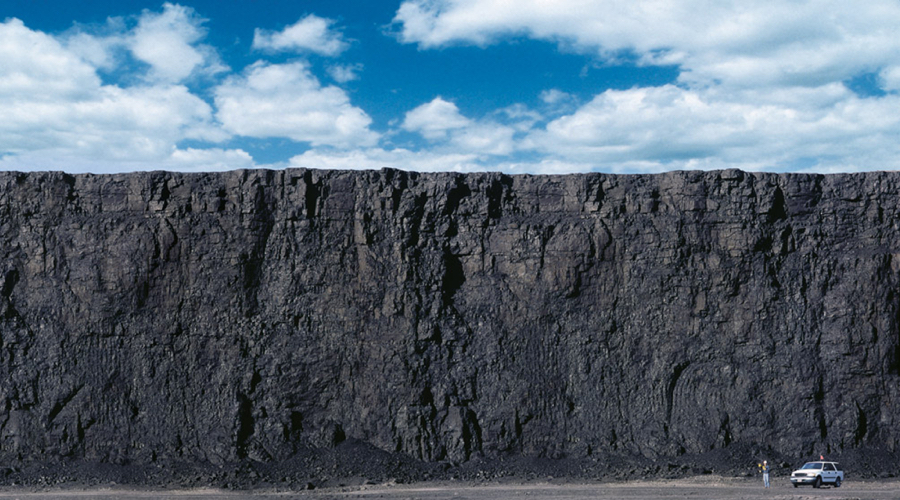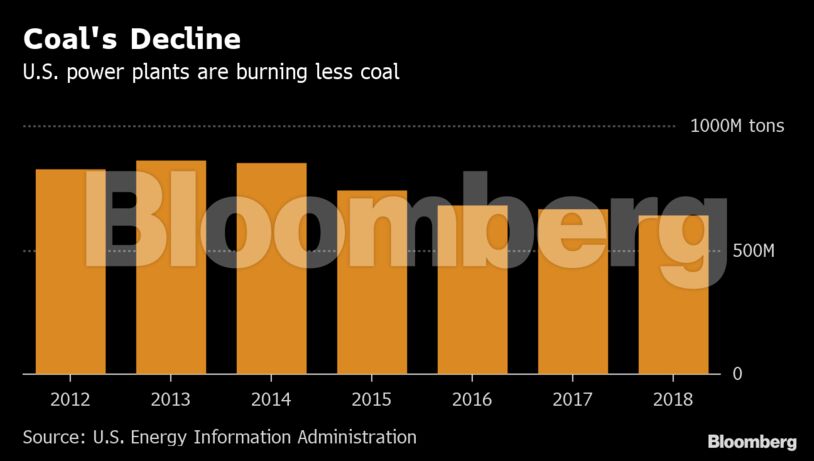
The two biggest U.S. coal miners are joining forces as the industry’s fortunes continue to wither.
Arch Coal Inc. and Peabody Energy Corp. are combining mines in Wyoming and Colorado through a joint venture, the companies said in a statement Wednesday. The move, which analysts said was long-expected, will create about $820 million in savings, the miners said.
The deal comes as coal is being ravaged by shrinking demand. Despite President Donald Trump’s push to save the industry, power generators continue to close coal-burning plants and turn increasingly to natural gas, wind and solar. The Powder River Basin of Wyoming and Montana has been steadily declining since 2008 while coal prices are at multiyear lows.
“Coal is not going away. But the structural decline compels us to make structural improvements to our cost position,” Peabody Chief Executive Officer Glenn Kellow said on a call with analysts.
Arch shares rose as much as 8.2% in New York. Peabody gained as much as 6.8%.
Mines in the Powder River Basin have been particularly hard hit. The region only produces the variety of coal used in power plants and has not benefited from strong demand for the type used to make steel. And since the region has no major rivers and is 1,000 miles (1,600 kilometers) from the ocean, it’s expensive for miners to send to coal overseas.
“Plants that burn Powder River Basin coal are closing down,” Bloomberg Intelligence analyst Andrew Cosgrove said in an interview.
The move by Peabody and Arch includes combining two adjacent mines in the area: Peabody’s North Antelope Rochelle Mine, the world’s biggest coal mine, and Arch’s Black Thunder Mine. The two complexes share a 7-mile border.
“Everyone has looked upon these two operations for decades and said ‘yes, something like this should happen,”’ Mike Dudas, an analyst for Vertical Research Partners LLC, said in an interview. “For coal to remain competitive, companies need to take out costs and find synergies.’’
Peabody will be a 66.5% owner of the joint venture and serve as operator, the companies said. The two miners, which are both based in St. Louis, will share profits and capital requirements in proportion to their ownership percentages. They’ve been talking about the combination for “a fairly substantial time,” Vic Svec, Peabody’s head of investor relations, said in an interview.
The companies’ combined assets account for about two-thirds of the Powder River Basin’s output. That means the transaction may face a lengthy regulatory review, making it unlikely the newly-formed venture would consider buying other mines in the region any time soon, according to Lucas Pipes, an analyst with B. Riley FBR. However, utilities that historically were highly reliant on Powder River Basin coal increasingly have access to alternatives, notably cheap natural gas and renewables.
The Arch-Peabody deal comes about 18 months after two other miners, Murray Energy Corp. and Bowie Resource Partners LLC, formed a partnership to sell coal from Utah.
Trump’s push to save the coal industry has focused on scaling back sweeping Obama-era curbs on greenhouse gas emissions. That includes a rewrite of the Clean Power Plan that the Environmental Protection Agency is scheduled to unveil Wednesday. But the efforts are likely to do little to stop coal plants from closing, according to Nicholas Steckler, head of U.S. power for BloombergNEF.
U.S. power produced from burning coal shrank by 6.3% in 2018, as almost 13 gigawatts of coal plants were closed, second only to the record seen in 2015 when 15 gigawatts of plants were shuttered, according to BloombergNEF. A typical nuclear reactor has 1 gigawatt of capacity.
(By Jim Efstathiou Jr. and Will Wade)


Comments